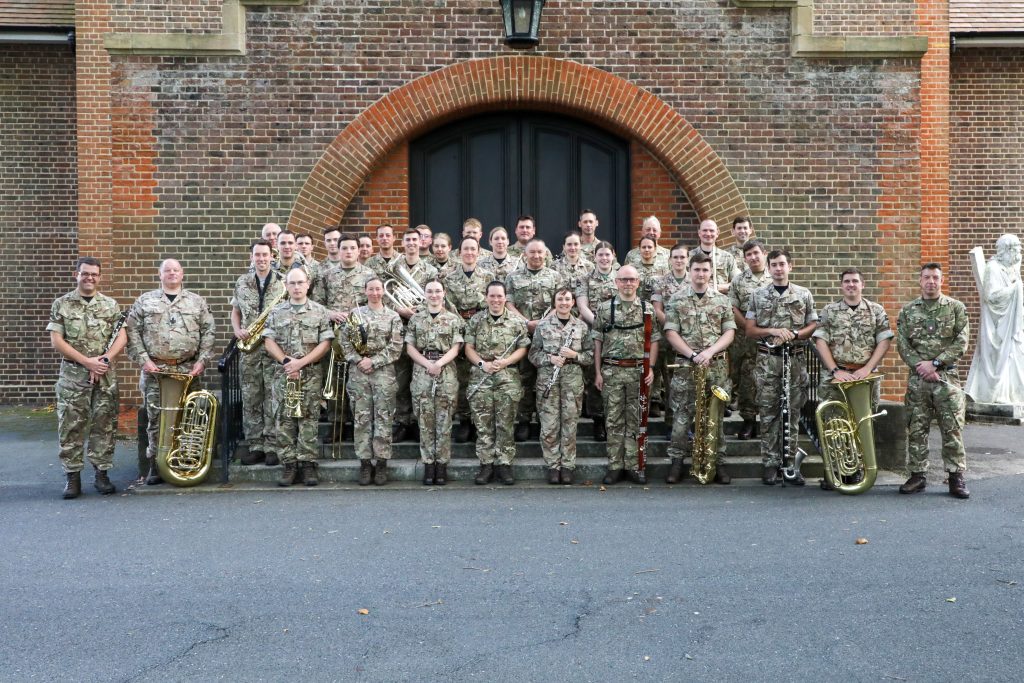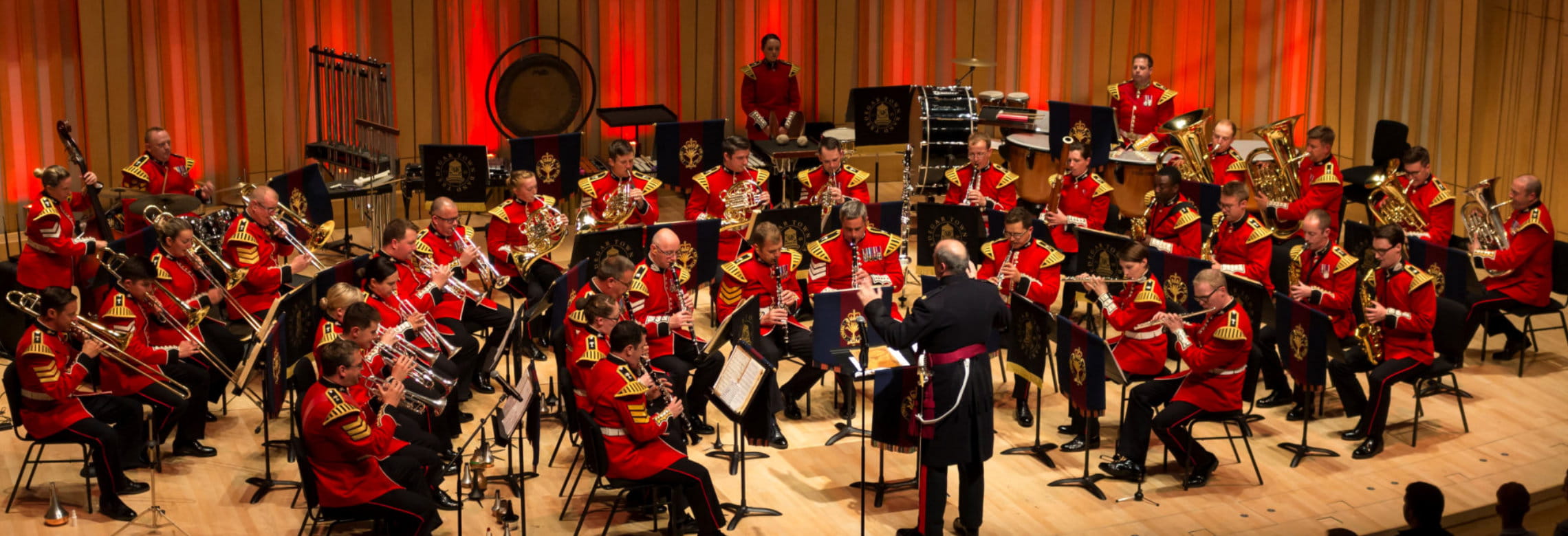The Band of the Household Cavalry
The Band

The Band of the Household Cavalry was formed in September 2014 by the union of The Band of The Life Guards with The Band of The Blues and Royals, the two mounted bands of the British Army. With over sixty musicians, the band is now the largest regular military band in the United Kingdom.
The history of The Life Guards began in 1659 at the court of the exiled King Charles II in Holland when a number of royalist gentlemen led by Lord Gerrard of Brandon formed themselves into the King’s Life Guard. From the outset, music held an important role in regimental life – it is recorded that as early as 1660 the regiment was preceded by its own mounted kettledrummer and four trumpeters. By 1822 the regiment had a band of twenty including nine trumpeters, hautbois (oboes) and French horns. In 1831 King William IV presented both the 1st and 2nd Life Guards with a pair of silver kettledrums which are still in use today and form an iconic part of The King’s Birthday Parade.
The Royal Horse Guards (Blues) formed in 1661 from members of the disbanded cavalry of Cromwell’s New Model Army and became known as ‘The Oxford Blues’, in reference to their first Colonel, the Earl of Oxford, and to their blue tunics.
In 1805 King George III personally presented a pair of solid-silver Kettledrums to the Royal Horse Guards as ‘testimony to their honorable and military conduct on all occasions’. These kettledrums continue to be used today and are carried by the Drum Horse on The King’s Birthday Parade. In 1969 the Royal Horse Guards (Blues) amalgamated with the 1st Royal Dragoons (The Royals) to become the Blues and Royals (RHG/D).
Whilst the musicians in the Band of the Household Cavalry band are under the direction of The Royal Corps of Army Music (RCAM), the State Trumpeters remain under the direct command of The Royal Household.
Both Household Cavalry uniforms are worn on parade. When Senior Members of the Royal Family are in attendance, the musicians wear “State Dress” – the distinctive gold coats and blue jockey caps. “State Dress” is the oldest continually worn uniform in the British Army. It was purchased in 1660 by The Lord Mayor of London, for The Restoration of King Charles II.
RCAM 30 Legacy Recordings
Crown Imperial – Sir William Walton OM
One of the most influential British composers, Sir William Walton was commissioned to compose Crown Imperial March for the coronation of King George VI in 1937. This march was written in the Pomp and Circumstance tradition and is particularly relevant for the occasion of the RCAM 30 Legacy Recordings.
Vienna Philharmonic Fanfare – Richard Strauss arr. Hales
Giving our musicians the opportunity to record established repertoire and a chance to flourish, the then Director of Music, Major Paul Collis-Smith, selected the Vienna Philharmonic Fanfare by Richard Strauss to record, as the fanfare had been written for the Vienna Philharmonic’s 40th anniversary. The work’s celebratory and resounding atmosphere is extremely relevant for The Royal Corps of Army Music’s 30thAnniversary.
The Countess of Wessex March – Ian Mitchell
To showcase the talent within The Royal Corps of Army Music, Musn Ian Mitchell’s H.R.H. The Countess of Wessex was selected as the Colonel-in-Chief of the Royal Corps of Army Music, now the Duchess of Edinburgh, was at the time of composition the Countess of Wessex. It was also composed to mark the occasion of the closure of Kneller Hall, the spiritual home of The Royal Corps of Army Music. Musn Mitchell, formerly WO1 Bandmaster, was a member of The Band of The Blues and Royals before continuing a full career as Bandmaster of The Band of The King’s Division and The Band of The Irish Guards.

